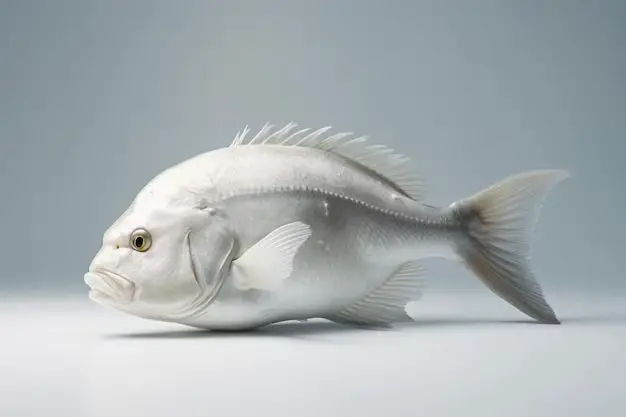The majority of fish species have gray, silver, or blue coloration. This is especially true for fish that live in open water habitats like the ocean. For example, tuna, swordfish, mackerel, herring, and anchovies are all gray or silver fish. But why is this coloration so common in the fish world? There are several evolutionary reasons that explain the prevalence of gray among fish species.
Camouflage
One of the main reasons is camouflage. Having gray, silver, or blue coloration allows fish to blend in to their watery surroundings and avoid detection by predators. The pale underside of many fish helps them disappear when viewed from below, while their darker upper half blends with the dim lighting above. This counter-shading camouflage works well in open water where fish are exposed from all angles.
The coloration also disguises fish when viewed from the side. Most ocean waters have a gray or blue hue which is easily replicated with silvery scales. In addition, the reflective quality of these scales helps diffuse light similar to the way it is diffused in water, making fish harder to spot by predators looking for distinct shapes. Camouflage is such an important evolutionary pressure that most mutations resulting in color variation likely impaired the fish’s ability to blend in and were selected against.
Communication
While gray coloration provides camouflage, many fish species need to communicate with each other too. Certain patterns and flashes of light off their silver scales allow fish to signal mate availability, territorial boundaries, or the presence of prey. Specialized skin cells called chromatophores allow fish like tuna to rapidly change coloration, flashing signals to other members of their school. The typical background color for these fish remains gray or silver, with temporary displays in other hues used for specific types of communication.
Light Environment
The limited light spectrum and filtering effects of water have also influenced the evolution of gray coloration in many fish. Water quickly absorbs long wavelength colors from sunlight like red, orange, and yellow. At a depth of just 10 meters, most of the sunlight spectrum has been filtered out except for blue and green hues. Because of this, any fish colored red or orange would appear very dark and easily spotted by predators. Blue, green, silver, and gray fish however blend in with the ambient colors found in deeper ocean waters.
Counter-Countershading
Some predators have evolved highly sophisticated eyes that allow them to spot color variations or counter-shading patterns. To combat this, many fish evolved an even more effective form of camouflage called counter-countershading. This involves complex mottled patterns of very similar gray, silver, and blue hues. These irregular patterns disguise shadows and break up the fish’s outline, making them nearly impossible to spot even with highly acute vision. The almost random-looking patterns are actually very precisely evolved camouflage adapted over many generations.
| Fish Species | Coloration |
|---|---|
| Tuna | Silvery gray with blue back |
| Swordfish | Metallic silver gray |
| Mackerel | Steel blue or green back with silver sides |
| Herring | Metallic silver blue |
| Anchovies | Silver with blue reflections |
Exceptions and Variations
While gray, silver, and blue coloration dominates most open water fish, there are some exceptions. Certain species show more vivid colors during spawning times to attract mates, then quickly revert back to camouflage patterns. Tropical fish display more bright and varied colors because the coral reef environment provides many hiding places. Bottom dwelling fish like flounder often have mottled coloration to match the seabed below.
There are also variations in the specific shades of gray, silver, and blue between fish species and populations. Differences in diet, water chemistry, genetics, and other factors result in subtle variations. However, the overall themes of camouflage, communication, and adaptation to the underwater light environment remain the key evolutionary driving forces.
Conclusion
In summary, the prevalence of gray, silver, and blue coloration in most fish species comes down to camouflage, communication, light environment, and predator-prey evolutionary adaptations. Detailed studies of fish vision science and the underwater light spectrum have revealed how this coloration provides exceptional camouflage while still allowing for communication via flashing displays. The success of gray coloration is further evident in some fish that evolved counter-countershading patterns to foil highly visual predators. While other colors exist among specific populations and species, the natural selection pressures of open water habitats clearly favor more gray fish.


